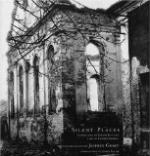“The dog is a good dog,” she said, her breath choking her.
Apparently the young man had not heard.
“It will be well to name the dog that he may answer to his name,” she ventured again.
Dick, abruptly gripped by the incomprehensible obsession, uneasy as at something of which he only waited the passing, resentful because of the discomfort this caused him, unable to break through the artificial restraint that enveloped his spirit, lifted his eyes suddenly, dead and lifeless, to hers.
“It is time to lift the net,” he said.
The girl made no more advances. She moved almost automatically about her accustomed tasks, preparing the materials for what remained to be done.
Promptly on the seventh day, with much preparation and precaution, Dick moved. He had now to suffer the girl’s assistance. When he first stood upright, he was at once attacked by a severe dizziness, which would have caused a fall had not May-may-gwan steadied him. With difficulty he hobbled to a seat outside. Even his arms seemed to him pithless. He sank to his place hard-breathed, exhausted. It was some minutes before he could look about him calmly.
The first object to catch his eye was the cardinal red of a moose-maple, like a spot of blood on velvet-green. And thus he knew that September, or the Many-caribou-in-the-woods Moon, was close at hand.
“Hi!” he called.
May-may-gwan came as before, but without the look of expectation in her eyes.
“Bring me wood of mashkigiwateg, wood of tamarack,” he commanded; “bring me mokamon, the knife, and tschi-mokamon, the large knife; bring the hide of ah-tek, the caribou.”
“These things are ready, at hand,” she replied.
With the couteau croche, the crooked knife of the North, Dick laboured slowly, fashioning with care the long tamarack strips. He was exceedingly particular as to the selection of the wood, as to the taper of the pieces. At last one was finished to his satisfaction. Slowly then he fashioned it, moulding the green wood, steaming it to make it more plastic, until at last the ends lay side by side, and the loop of wood bowed above in the shape of a snow-shoe raquette. The exact shape Dick still further assured by means of two cross-pieces. These were bound in place by the strips of the caribou-skin rawhide wet in warm water, which was also used to bind together the two ends. The whole was then laid aside to dry.
Thus in the next few days Dick fashioned the frame of six snow-shoes. He adhered closely to the Ojibway pattern. In these woods it was not necessary to have recourse to the round, broad shape of the rough bowlder-hills, nor was it possible to use the long, swift shoe of the open plains. After a while he heated red the steel end of his rifle cleaning-rod and bored holes for the webbing. This also he made of caribou rawhide, for caribou shrinks when wet, thus tightening the lacing where other materials would stretch. Above and below the cross-pieces he put in a very fine weaving; between them a coarser, that the loose snow might readily sift through. Each strand he tested again and again; each knot he made doubly sure.




